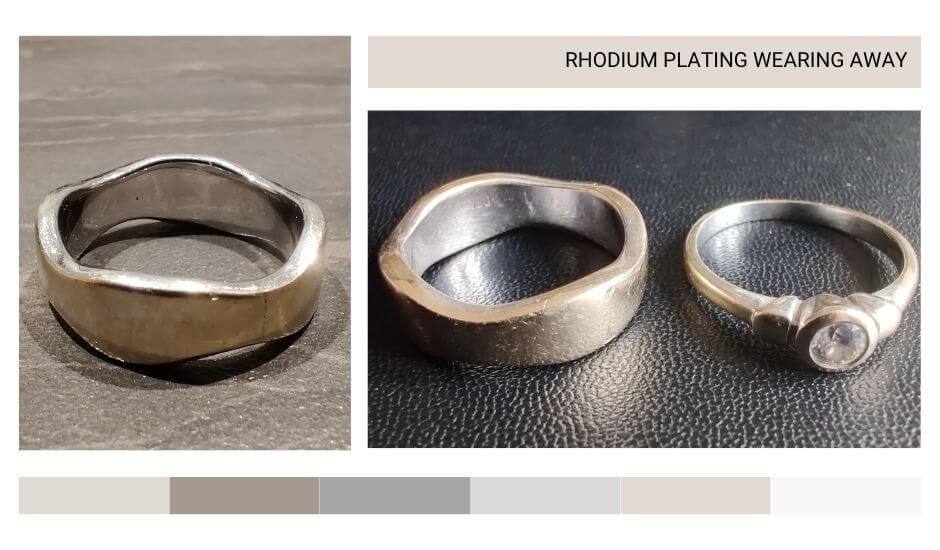Address
304 North Cardinal
St. Dorchester Center, MA 02124
Work Hours
Monday to Friday: 7AM - 7PM
Weekend: 10AM - 5PM
Address
304 North Cardinal
St. Dorchester Center, MA 02124
Work Hours
Monday to Friday: 7AM - 7PM
Weekend: 10AM - 5PM

Welcome to our comprehensive guide on rhodium! Whether you’re a jewelry enthusiast, a curious investor, or simply interested in learning more about this fascinating metal, you’ve come to the right place. Rhodium might not be as well-known as gold or silver, but it holds a special place in the world of metals. Let’s dive into the world of rhodium and explore its unique properties, uses, and care tips.
Rhodium, a member of the platinum group, boasts some pretty impressive characteristics. Its most notable feature? It’s incredibly resistant to rust. But what exactly is rust? Rust is a form of corrosion that specifically affects iron and its alloys, leading to the familiar reddish-brown flaking.
Rhodium is innately resistant to oxidation and moisture, the two culprits behind rusting in metals like iron. This resistance makes rhodium a top choice for high-end jewelry and industrial applications. Fun fact: Did you know that rhodium is one of the rarest and most valuable precious metals in the world? That’s right, it’s even rarer than gold!
Let’s put things into perspective with a comparison:
This comparison highlights rhodium’s superior resistance to environmental factors compared to some other common metals.
Absolutely! Rhodium’s resistance to corrosion is one of its hallmark features. This means it doesn’t react easily with corrosive substances, making it ideal for high-quality coatings and jewelry. In environments where other metals might degrade or corrode, rhodium stands strong.
While rhodium is remarkably corrosion-resistant, no metal is entirely immune to environmental influences. However, in the case of rhodium, these effects are minimal. It’s resistant to most acids and, unlike silver or brass, doesn’t tarnish easily in the presence of sulfur compounds.
Rhodium jewelry is known for its dazzling, reflective finish. Maintaining this luster is key to keeping your jewelry looking its best.
To maintain your rhodium jewelry’s shine:
Cleaning rhodium-plated items is simple and straightforward. Here’s a step-by-step guide:
Remember, harsh chemicals and ultrasonic cleaners are a no-go for rhodium-plated items. They can damage the plating and reduce its lifespan.
It’s generally safe to wear rhodium-plated jewelry in the shower, but it’s not recommended. Prolonged exposure to water and soap can eventually wear down the plating. To keep your jewelry in top condition, it’s best to remove it before showering.
Rhodium’s durability is one of its selling points, but like all metals, it’s not entirely impervious to wear and tear.
Interestingly, pure rhodium does not tarnish. Tarnishing is a chemical reaction that occurs on the surface of some metals, leading to discoloration and dullness. Thanks to rhodium’s chemical inertness, it remains bright and shiny over time.
Rhodium sidesteps both these issues with its unique chemical properties.
When rhodium is alloyed with other metals, its properties can change. While rhodium itself doesn’t rust, its alloys might, depending on the other metals involved. For instance, if rhodium is alloyed with a metal prone to rusting, the overall alloy might have reduced rust resistance.
The lifespan of rhodium plating can vary greatly depending on several factors. Typically, rhodium plating can last anywhere from one to five years, but this duration can be influenced by:
To maximize the longevity of your rhodium-plated jewelry, it’s crucial to follow proper care and maintenance guidelines.
Understanding the language used to describe metals can be key to making informed choices about jewelry and investments.
These terms are often used interchangeably, but they refer to different processes:
Rhodium, as we’ve learned, is resistant to all these forms of metal degradation.
In wrapping up, rhodium stands out as a unique and valuable metal with impressive properties. Its resistance to rust, corrosion, and tarnish makes it an excellent choice for jewelry and industrial applications. By understanding how to properly care for and maintain rhodium, whether in its pure form or as part of an alloy, you can ensure its longevity and luster.
We hope this guide has been informative and helpful in deepening your understanding of rhodium. Whether you’re looking to invest in rhodium jewelry or just curious about this remarkable metal, keeping these tips in mind will ensure you get the most out of your rhodium items.
Now that you’re armed with knowledge about rhodium, why not put it to use? If you have rhodium jewelry, take a moment to examine it with your newfound understanding. And if you have any questions or experiences to share about rhodium, we’d love to hear from you in the comments below. Your engagement helps us all learn and grow in our appreciation of this extraordinary metal.
Thanks for joining us on this journey through the world of rhodium. Happy investing, and take care of those precious rhodium pieces!